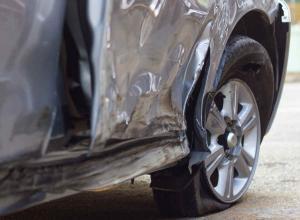
Call Us 24/7 For A Free Legal Consultation






Following the avalanche of information and statistics regarding the dangers of cell phone use while driving, many drivers switched to hands-free devices, believing they had successfully circumvented those dangers. But, do hands-free devices really help prevent injuries? There are currently 14 states plus the District of Columbia which prohibit the use of hand-held cell phones, and another four states which have a handheld ban for younger drivers, and those driving a state vehicle.

Only twenty states and the District of Columbia currently ban school bus drivers from using a cell phone while driving the school bus. Hands-free phone use is currently legal in all states, with a very few caveats. As an example, New York City taxicab drivers are prohibited from using a cell phone while working, regardless of whether the phone is hand-free or not. All states, other than Alaska, Missouri, Montana and Texas have laws against texting and driving, and even those states forbid texting and driving for teen drivers. In the state of California, drivers who are 18 years and older can listen to, dictate and send a text message, so long as they use a hands-free device which is voice activated. Perhaps the reason for concern is that even hands-free phone devices have been shown to be a distraction for drivers, and distracted driving in Colorado is fast moving up to the number one cause of auto accidents.
So, while a hands-free device for your phone may seem like a safe, legal way to allow you to use your phone while driving, a study by the University of Iowa has found that those drivers using a hands-free device can take up to twice as long to react to a problem while driving. The study also found that drivers took at least a tenth of a second longer to see a potential roadway hazard while using a hands-free cellphone device. While a tenth of a second may not sound like that much, remember that an accident happens in a mere split second. While using a hands-free device, a distraction seen by a driver can increase that driver’s reaction time to a quarter of a second, which, at 60 mph, equals an extra ten feet to stop and increases the chances of getting into a car accident.
This University of Iowa study concluded that drivers who are talking on a hands-free device have a kind of “tunnel vision” where they may be looking ahead through the windshield, but their eyes are not moving as much as they do when no hands-free device is used. In other words, your attention is significantly slowed while you use a hands-free device, meaning your ability to react by braking is also significantly slowed. This means that talking on a hands-free device can mean the difference between rear-ending the car in front of you, or stopping safely. Yet another study on hands-free phone devices found that using a mobile phone while driving—even hands-free—creates “105 opportunities per hour to kill yourself or others.”
In fact, study after study has found that talking on a cell phone distracts your brain from whatever else you are doing—like driving. Your attention is on the conversation, and that conversation distracts your brain from driving. In simulations done by the University of Utah, drivers who were talking on cell phones—whether hands-free or not—got into more accidents, ran more red lights, braked later, and simply made more driving mistakes than drivers who were not talking on a cell phone. Unfortunately, because hands-free cell phone use sounds safer, many drivers freely use these hands-free devices while behind the wheel. We think we are doing something which reduces our risk of having an accident, when, in fact we are not. Perhaps even worse, when we use a hands-free device we are just as distracted as when we don’t, but may be less careful when driving while using a hands-free device because we think we are safer.
The National Transportation Safety Board has recommended a total ban on cell phone use for drivers, whether talking, texting, hand-held or hands-free; Japan currently imposes such a ban. The NTSB also wants tougher enforcement of the existing laws against distracted driving. Many large companies forbid their employees from talking on cell phones for liability reasons, but it is likely that progress on forbidding the use of cell phones in the United States will be very slow, as we are simply tied too closely to our electronic devices.
If you or someone you love has been injured in a car accident that was caused by a distracted driver, our Colorado car accident attorneys can help. At Rector Stuzynski LLC, our car accident attorneys have the experience and the resources to build a case that is designed to obtain maximum compensation for our clients. Call us today at 719-578-1106 for a free initial consultation and review of your case.
We serve clients injured anywhere throughout the state of Colorado, but we focus on residents of these areas: Colorado Springs, Manitou Springs, Fountain, Briargate, Monument, Black Forest, Pueblo, Canon City, Larkspur, Security-Widefield, Peyton, Castle Rock, Teller County, El Paso County, Elbert County, Park County, Douglas County and beyond.
Consultations are always free and available 24/7 over the phone.